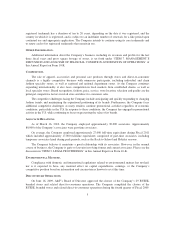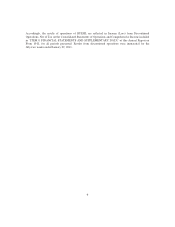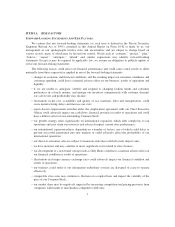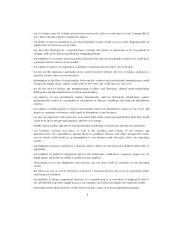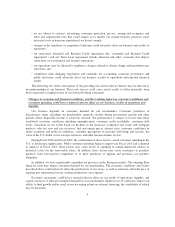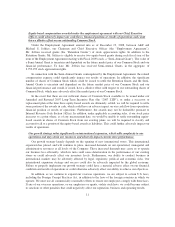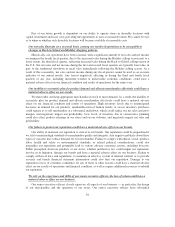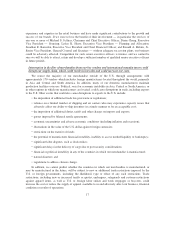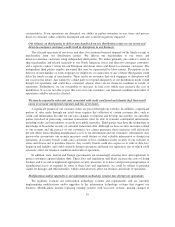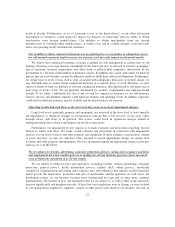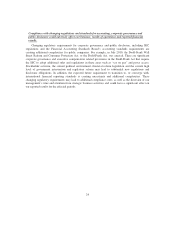Abercrombie & Fitch 2011 Annual Report Download - page 18
Download and view the complete annual report
Please find page 18 of the 2011 Abercrombie & Fitch annual report below. You can navigate through the pages in the report by either clicking on the pages listed below, or by using the keyword search tool below to find specific information within the annual report.
direct-to-consumer channel within the last few years has encouraged the entry of many new competitors
and an increase in competition from established companies. We face a variety of competitive challenges,
including:
• anticipating and quickly responding to changing consumer demands or preferences better than our
competitors;
• maintaining favorable brand recognition and effectively marketing our products to consumers in
several diverse demographic markets;
• sourcing merchandise efficiently;
• developing innovative, high-quality merchandise in styles that appeal to our consumers and in ways
that favorably distinguish us from our competitors; and
• countering the aggressive promotional activities of many of our competitors without diminishing the
aspirational nature of our brands and brand equity.
In light of the competitive challenges we face, we may not be able to compete successfully in the
future. Further, increases in competition could reduce our sales and harm our operating results and
business.
Our stock price may be volatile and investors may not be able to resell shares of our Common Stock at
or above the price paid to acquire the shares.
The price of our Common Stock fluctuates significantly, which may result in losses for investors. The
market price of our Common Stock has been volatile. From February 1, 2009 to January 28, 2012, the price
of our Common Stock reported by the New York Stock Exchange ranged from a low of $16.95 per share to
a high of $78.25 per share. We expect our Common Stock to continue to be subject to fluctuations as a
result of a variety of factors, including factors beyond our control.
Our ability to attract customers to our stores depends, in part, on the success of the shopping malls in
which most of our stores are located.
In order to generate customer traffic, we locate many of our stores in prominent locations within
successful shopping malls. Our stores benefit from the ability of the malls’ “anchor” tenants, generally
large department stores and other area attractions, to generate consumer traffic in the vicinity of our stores
and the continuing popularity of malls in the U.S. and, increasingly, in many international locations as
shopping destinations. We cannot control the development of new shopping malls in the United States or
around the world; the availability or cost of appropriate locations within existing or new shopping malls;
competition with other retailers for prominent locations; or the success of individual shopping malls. All of
these factors may impact our ability to meet our productivity targets for our domestic stores and our growth
objectives for our international stores, which are primarily mall-based, and could have a material adverse
effect on our financial condition or results of operations. Unfavorable economic conditions, particularly in
certain regions, have affected mall traffic and resulted in the closing of certain anchor stores. The viability
of certain commercial and real estate firms, which operate major shopping malls, has also been threatened.
In addition, some malls that were in prominent locations when we opened stores may cease to be viewed as
prominent. If this trend continues or if the popularity of mall shopping continues to decline generally
among our customers, our sales may decline, which would impact our gross profits and net income.
15


